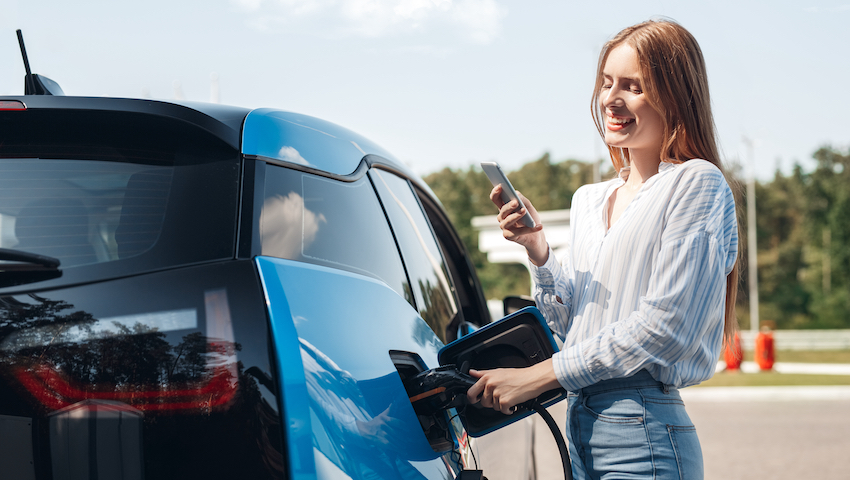
Getting female drivers on board the shift to electric
Csilla Heim, Country Director at Easee UK, discusses the role of women within the growing electric vehicle industry.
It’s undeniable that there is so much to celebrate about the rise of electric vehicles (EVs) in the UK. In 2015, less than 0.5% of new vehicle registrations were battery electric vehicles (BEVs). By the end of 2022, BEVs had overtaken the sale of petrol and diesel vehicles for the first time, while at the end of April 2023 there were almost 760,000 BEVs on UK roads. The 2030 ban on the sale of new petrol and diesel cars, along with the 2035 phase out date for plug-in hybrids, could further help the UK to be crowned the biggest BEV market in Europe.
But it’s important for all UK drivers to be confident enough to adopt an EV, regardless of any misconceptions saturating the internet. So what can the EV industry do to facilitate this?
EV confidence and concerns among female drivers
Despite successful EV uptake to date, accounting for female perspectives and experiences can unlock pathways to reach net zero, faster. A large percentage of consumers are still reluctant to make the switch to EV- many of them being women. In fact, Government research published in February 2022 found women were less likely than men to be interested in EVs due to range anxiety, the cost of EVs, and a lack of charging infrastructure.
Interviews conducted by Keele University academics found female EV drivers were concerned about charging late at night in dark, poorly lit, unsheltered, and relatively isolated areas. Many felt “trapped” inside their vehicles while charging, especially if there were no basic amenities close by.
Another 2022 survey by Motoring website Honest John found that 80.3% of EV drivers feel vulnerable when charging their electric car, 62.9% don’t think security measures at charge points are adequate, and 88.5% have chosen not to use a charge point because they felt unsafe at the location.
Thankfully, companies like ChargeSafe and HeyCar are working to highlight safety concerns at public charging points and urging the government to introduce minimum personal safety standards to ensure all road users are safe.
Diverse perspectives matter
So, if some positive industry change is in motion, why should we care?
For one, if women don’t feel safe while charging, it’s likely that their unease will be prevalent among more vulnerable drivers, such as the elderly or those with certain disabilities. As an industry we need to proactively address these reservations to encourage everyone to transition to EVs before the 2030 ICE ban.
Secondly, if women are not buying EVs, there is a risk that their needs and preferences may be overlooked by manufacturers and policymakers, creating a ‘vicious circle’. We have seen this before with airbags and crash test dummies, which have historically been designed with male drivers in mind, putting women at greater risk of injury in the event of an accident.
Finally, it doesn’t make commercial sense to overlook the needs of half of the UK’s drivers- more than half, if other groups such as elderly drivers or those with limited mobility share similar concerns. In an age where women make up 35% of all car registrations the brands that successfully appeal to women drivers will be the ones who reap the rewards.
Getting women on board
Setting out the challenges is the easy part. But what exactly can we do about it?
There is work to do both in raising awareness of the benefits of EVs and proactively challenging the misconceptions. For example, according to Auto Trader’s research in 2022, 25% of women drivers in the UK believed that electric vehicles (EVs) were more expensive to run than equivalent petrol or diesel cars. This is a persistent myth that many people will continue to believe true if the industry does not find a way to get through to consumers.
While education is essential, it is equally vital to ensure that the voices of female drivers are heard. Rather than forming echo chambers, the industry should make concerted efforts to reach those audiences that remain unconvinced to switch to electric. By creating a dialogue with female drivers and other demographics that may have similar views, we can understand their needs and challenges, and adapt our strategies to suit.
There are some wonderful examples of countries that are proactively aiming to improve the EV experience for women that we can emulate. European cities such as Umeå in northern Sweden, have installed illuminated charging stations with emergency call buttons in well-lit areas to increase the safety of charging at night. Norway has also installed a fast charger on every main road in the country, tackling the issue of range anxiety head on.
Female talent should be represented at all levels of the automotive and EV charging industries to ensure that the perspectives and experiences of women are valued, not overlooked, when it comes to the design and rollout of EVs and EV charging infrastructure.
Electrification is an exciting challenge. While the scale of innovation in the automotive and EV charging industries is truly incredible to witness, as an industry, we must ensure that the transition to EVs caters to the needs of all drivers.





